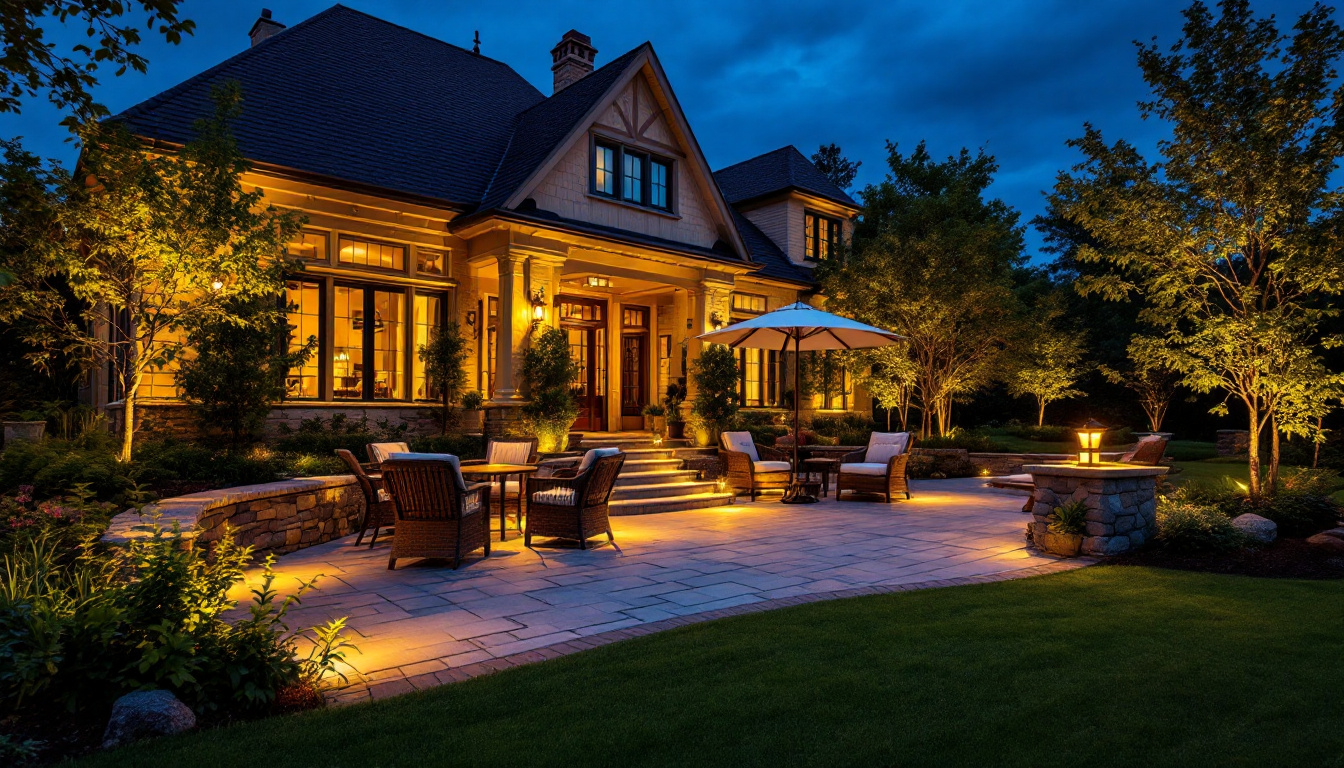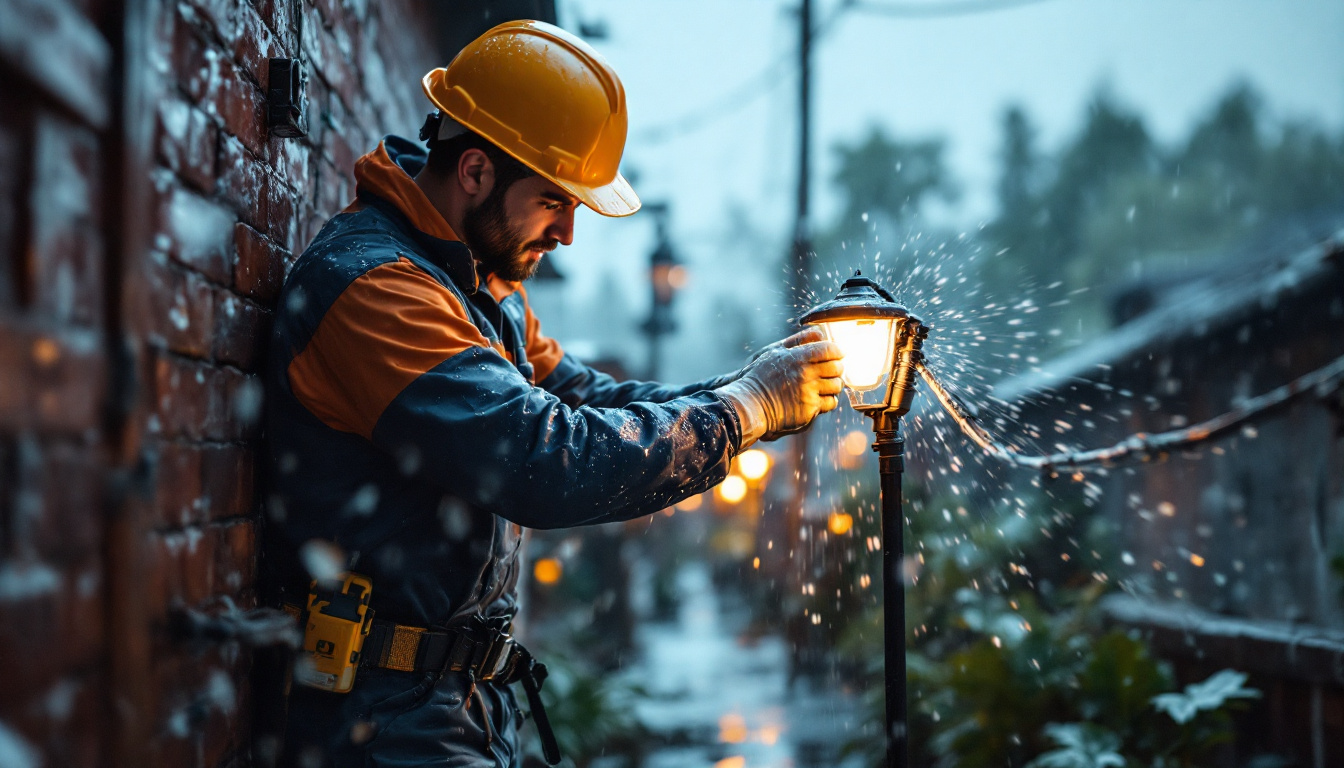

Lighting plays a crucial role in enhancing the aesthetic appeal and functionality of outdoor spaces. Among the various lighting techniques, uplighting stands out as a powerful method for creating dramatic effects and highlighting architectural features, landscapes, and gardens. For lighting contractors, understanding the nuances of uplighting can significantly improve project outcomes and client satisfaction. This article delves into proven methods for implementing uplighting effectively.
Uplighting involves positioning light fixtures at ground level, directing light upwards to illuminate walls, trees, or other vertical surfaces. This technique not only enhances the beauty of the illuminated object but also creates a sense of depth and dimension in outdoor environments. The versatility of uplighting makes it suitable for various applications, from residential gardens to commercial properties. Additionally, uplighting can be tailored to fit different styles and themes, whether it’s a modern minimalist design or a classic garden setting, allowing for a seamless integration with the surrounding landscape.
Uplighting offers several advantages that make it a preferred choice for many lighting contractors. Firstly, it can dramatically change the ambiance of a space. By casting light upwards, uplighting creates soft shadows and highlights, adding texture and interest to otherwise flat surfaces. This can be particularly effective in gardens where foliage and flowers can be showcased beautifully. The interplay of light and shadow can transform a simple garden into a captivating landscape, encouraging outdoor enjoyment even after sunset.
Secondly, uplighting enhances safety and security. By illuminating pathways, driveways, and entry points, it helps to deter potential intruders while providing a welcoming atmosphere for guests. Well-lit areas are less likely to be associated with accidents, making uplighting a practical solution for both aesthetics and safety. Furthermore, the strategic placement of uplighting can guide visitors through a space, ensuring they navigate safely while enjoying the visual appeal of the surroundings.
Uplighting can be applied in various settings, each with its unique requirements. For instance, in residential landscapes, uplighting can highlight trees, shrubs, and architectural features of the home, creating a warm and inviting environment. In commercial settings, uplighting can be used to draw attention to signage or to enhance the overall architectural design of the building. This technique can also be employed in public parks and recreational areas, where it serves to illuminate walking trails and gathering spaces, fostering a sense of community and safety during evening hours.
Moreover, uplighting is often employed in event settings, such as weddings or corporate functions, to create a specific mood or theme. By using colored lights or adjustable fixtures, contractors can transform a space to match the event’s aesthetic, making uplighting a versatile tool in a contractor’s arsenal. The ability to change colors and intensities allows for dynamic lighting designs that can evolve throughout an event, from romantic and soft during a wedding ceremony to vibrant and energetic during the reception. This adaptability not only enhances the visual experience but also plays a crucial role in setting the tone for memorable occasions.
The success of an uplighting project largely depends on the selection of appropriate fixtures. Lighting contractors must consider several factors, including the type of light source, fixture design, and durability.
LEDs have become the go-to choice for uplighting due to their energy efficiency, longevity, and versatility. They produce minimal heat, making them safer to use in various outdoor environments. Additionally, LED fixtures are available in a wide range of colors and intensities, allowing for customizable lighting effects.
Halogen lights, while offering a warm light quality, consume more energy and have a shorter lifespan compared to LEDs. However, they can be suitable for specific applications where a warmer color temperature is desired. Contractors should weigh the pros and cons of each light source based on the project requirements and client preferences.
When selecting uplighting fixtures, design and durability are paramount. Fixtures should blend seamlessly with the landscape while being robust enough to withstand outdoor conditions. Materials such as stainless steel, aluminum, and weather-resistant plastics are ideal for ensuring longevity.
Furthermore, the design of the fixture can influence the quality of the light output. Adjustable fixtures allow for flexibility in directing light, while diffused lenses can soften the beam for a more subtle effect. Contractors should assess the specific needs of each project to choose fixtures that will deliver optimal results.
In addition to material and design, the size of the fixture can also play a critical role in the overall aesthetic and functionality of the uplighting. Larger fixtures may be necessary for illuminating grand trees or architectural features, while smaller fixtures can be used to highlight pathways or garden beds without overwhelming the surroundings. The scale of the fixture should be in harmony with the landscape to create a balanced and inviting atmosphere.
Moreover, the installation process should not be overlooked. Fixtures that are easy to install and adjust can save time and labor costs, making them more appealing for contractors. Some modern fixtures come with integrated smart technology, allowing for remote control and programming of lighting schedules. This added convenience can enhance the user experience and provide greater flexibility in managing outdoor lighting, ensuring that the space is perfectly illuminated for any occasion.
Effective uplighting requires strategic placement of fixtures to achieve the desired visual impact. Contractors must consider the height, angle, and distance of the fixtures from the objects being illuminated.
The height at which uplighting fixtures are placed can significantly affect the quality of light produced. Generally, fixtures should be positioned at a height that allows for the light to wash over the surface without creating harsh shadows. A common practice is to place fixtures around one-third of the height of the object being illuminated.
Additionally, the angle of the light is crucial. Aiming the light directly at the object can create stark contrasts, while a more angled approach can produce softer, more flattering illumination. Experimenting with different angles during the installation process can help contractors find the perfect balance for each unique setting.
The distance between the uplighting fixture and the object being illuminated also plays a vital role in the overall effect. Placing fixtures too close can result in overly bright spots, while positioning them too far may dilute the light’s impact. A good rule of thumb is to start with a distance of about one-half to one-third the height of the object and adjust as necessary based on the desired effect.
In larger landscapes, contractors may need to use multiple fixtures to achieve even illumination and prevent dark spots. This approach not only enhances the visual appeal but also ensures that the lighting serves its practical purpose of enhancing safety and visibility.
Color plays a significant role in uplighting, enabling contractors to create various moods and atmospheres. The choice of color can dramatically alter the perception of a space, making it essential to consider client preferences and project goals.
Warm colors, such as soft whites, yellows, and ambers, create a cozy and inviting atmosphere, making them ideal for residential settings. These tones can enhance the natural beauty of plants and architectural features, providing a welcoming environment for guests.
Cool colors, including blues and greens, can evoke a sense of tranquility and calmness. These hues are often used in commercial settings or outdoor spaces designed for relaxation, such as patios or gardens. Contractors should work closely with clients to determine the best color palette that aligns with their vision.
Modern uplighting systems often incorporate control options that allow for dynamic effects and customization. Smart lighting systems enable contractors to adjust brightness, color, and even create lighting sequences based on specific events or times of day. This flexibility can enhance the overall impact of uplighting, making it more engaging for users.
Incorporating control systems not only adds value to the project but also provides clients with the ability to tailor their lighting experience. Educating clients on how to use these systems can further enhance their satisfaction and appreciation for the uplighting design.
Proper maintenance is essential for ensuring the longevity and effectiveness of uplighting installations. Lighting contractors should educate clients on the importance of regular maintenance and provide guidelines for keeping fixtures in optimal condition.
Conducting regular inspections of uplighting fixtures can help identify potential issues before they become significant problems. Contractors should recommend checking for dirt or debris buildup, which can obstruct light output. Cleaning fixtures periodically can significantly enhance their performance and appearance.
Additionally, inspecting the wiring and connections for any signs of wear or damage is crucial. Addressing these issues promptly can prevent costly repairs and ensure the safety of the installation.
Seasonal changes can impact the performance of uplighting fixtures. For instance, in areas with harsh winters, snow and ice can accumulate on fixtures, affecting their functionality. Contractors should advise clients on how to prepare their uplighting systems for seasonal changes, including covering fixtures during extreme weather conditions or adjusting settings as needed.
Furthermore, after severe weather events, a thorough inspection is advisable to ensure that all fixtures are functioning correctly and safely. This proactive approach can help maintain the integrity of the uplighting installation over time.
Uplighting is a powerful tool for lighting contractors, offering a myriad of benefits that enhance both the aesthetic and functional aspects of outdoor spaces. By understanding the principles of uplighting, selecting the right fixtures, employing strategic placement, and considering color and control options, contractors can create stunning lighting designs that exceed client expectations.
Moreover, emphasizing maintenance and longevity will ensure that these installations remain effective and beautiful for years to come. As the demand for innovative outdoor lighting solutions continues to grow, mastering uplighting techniques will position lighting contractors as leaders in the industry, ready to meet the evolving needs of their clients.
Ready to elevate your lighting projects with the proven methods of uplighting? Look no further than LumenWholesale for all your lighting needs. We provide contractors with high-quality, specification-grade lighting products at unbeatable wholesale prices. With our expansive selection, you’ll find the perfect fixtures to create stunning, reliable, and energy-efficient uplighting designs. Plus, enjoy the convenience of free shipping on bulk orders, ensuring you get the best value without any hidden costs. Transform your outdoor spaces with the quality, affordability, and convenience of Wholesale Lighting at the Best Value from LumenWholesale.

Discover the essential guide for lighting contractors on selecting and installing outdoor porch light fixtures.

Discover the frequent pitfalls lighting contractors face with Bulb T8 installations.

Discover essential strategies for effectively training your team in LED fluorescent tube replacement.

Discover the essential guide for lighting contractors on mastering waterproof electrical connectors.
Get notified when NEW deals are released.
Optimize your budget with wholesale discounts.
Only top-quality, specification-grade lighting products.
No additional costs at checkout - what you see is what you pay.
We understand the unique needs of contractors.